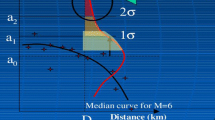
Overview
- Written by the scientist who discovered self-organized criticality Still a cutting-edge theory, ahead of its time when it was published
Access this book
Tax calculation will be finalised at checkout
Other ways to access
About this book
Similar content being viewed by others
Keywords
Table of contents (11 chapters)
-
Front Matter
-
Back Matter
Accessibility Information
PDF accessibility summary
EPUB accessibility summary
Bibliographic Information
Book Title: How Nature Works
Book Subtitle: the science of self-organized criticality
Authors: Per Bak
DOI: https://doi.org/10.1007/978-1-4757-5426-1
Publisher: Copernicus New York, NY
-
eBook Packages: Springer Book Archive
Copyright Information: Springer Science+Business Media New York 1996
Hardcover ISBN: 978-0-387-94791-4Published: 29 August 1996
Softcover ISBN: 978-0-387-98738-5Published: 23 April 1999
eBook ISBN: 978-1-4757-5426-1Published: 11 November 2013
Edition Number: 1
Number of Pages: XIII, 212
Number of Illustrations: 27 b/w illustrations, 9 illustrations in colour
Topics: Analysis, Complex Systems, Simulation and Modeling, Math. Applications in Chemistry, Earth Sciences, general, Mathematical and Computational Biology



